Safety & Well-being
Login Tools
My Human Resources
Enter direct banking information, view earnings statements, change your address & manage training. [ LOGIN]
Pension Account
View pension plan balances and investment mix and choose your investments. [ LOGIN]
Manulife
Check and submit claims, get forms, print Manulife card. [ LOGIN]
Faculty Staff Resources
Salary ranges, pay schedules and related information. [ LOGIN]
Researcher Toolbox
Hiring/appointing research roles, including budgeting for salary and benefit costs. [ LOGIN]
Administrator Toolbox
Appointments and pay administration, offer templates. [ LOGIN]
Leader Toolbox
Help with recruiting, hiring, enhancing performance. [ LOGIN]
Western Financial
Submit expenses, PER inquiry, research grants. [ LOGIN]
Laboratory Ergonomics

Laboratory activities typically involve either highly repetitive movements (ex. pipetting) or prolonged static postures (ex. Using a microscope, cell counting), sometimes both. These types of activities pose ergonomic risk because there is little variety in the muscles being used and long task durations. There is also often limited storage space in laboratories, as table tops and workstations need to remain uncluttered, many frequently used items are stored on overhead shelves or cabinets. This typical laboratory environment results in awkward lift postures and frequent reaches. Pinch grips are also often used with tweezers, eye eyedroppers or small pipettes.
General recommendations to improve laboratory ergonomics:
- Store heavy objects on shelves below shoulder height whenever possible
- Use a stable footstool or stepladder to reach objects stored on high shelves
- Avoid twisting while carrying an object. The load should be directly in front of the worker
- Store frequently used materials on shelving units which are located between knuckle and chest height
- Utilize rotating platforms/shelves to store material close to the worker, reducing unnecessary reaching
- Increase the diameter or span of the tweezers to reduce grip force
- Use anti-fatigue mats or foot rests for areas requiring prolonged standing
- Use thin flexible gloves that fit properly
- Use tools with padded handles or large-diameter handles to reduce required grip force
- Shift weight frequently when standing for prolonged time, use a footrest to prop up one foot at a time
Proper Posture
Maintaining proper posture in the lab:
- Avoid using stools with little-no back support whenever possible
- Sit against the back of the chair
- Use a foot rest to ensure feet are supported
- Avoid head and neck extension whenever possible, adjust the workstation
- Use height-adjustable workstations and tables when possible
- Keep elbows close to the body and shoulders relaxed while working
Pipetting
Pipetting:
- Use electronic pipettes with mixing devices whenever possible
- Use light-force/light touch pipette that require little force to activate
- Use shorter pipettes to reduce the elevation required by the hand to hold it
- Take microbreaks every 20-30 minutes to stretch the hand and arm muscles being used
- Clean pipettes regularly to prevent sticking
- Use multi-channel pipettes for longer duration tasks
- Rotate pipetting tasks with other laboratory tasks if possible
- Adjust the workstation so the pipetter doesn’t have to elevate their arms while pipetting
- Use minimal force when applying pipette tips
- Use thin-walled pipettes that fit properly and are easy to eject
Using a microscope
Using a microscope:
- Take a microbreak every 20-30 minutes to stretch your back and neck
- Use microbreaks to rest eyes and focus on far objects to stretch eyes
- Use adjustable or angled microscope stands and view pieces to avoid forward leaning
- Alternate using a microscope with other lab tasks when possible
- Try to maintain a neutral spine while using a microscope
- Cut-out work tables allow the technician to get closer to the microscope with a more neutral posture
- When cut-out work stations are not possible, pull the microscope as close to the edge of the table as possible
- Use arm rests or padding to reduce contact stress while using adjustment knobs
- Use chairs with adequate lumbar support
- Use television or computer screens when possible to avoid use of eyepieces
- Use foot rests to ensure feet are supported
- Ensure adequate foot room under desk/workstation
- Tilting the seat forward may reduce need to extend head and neck while using a microscope
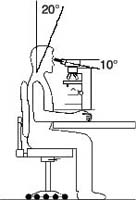

Workstation Design
Workstation Design:
- Sitting or standing, the height of table should encourage the elbow to relax at 90 degrees
- While sitting, height of table should be level with the belly button
- Location of workbench should be minimal distance from other necessary tools
- Workbench height should be adjustable to accommodate the variance in individual height
- Workbench height should be adjusted for the type of work:
- light work: at elbow height
- hard work: below elbow height
- precision work: above elbow height

Working in biosafety cabinets, fumehoods and gloveboxes
Working in biosafety cabinets, fumehoods and gloveboxes:
- Remove false fronts and supplies from under the work area
- Use anti-fatigue floor mats if standing for long periods
- Adjust your chair height so your bellybutton is level with the height of the worksurface
- Ensure adequate room under biosafety cabinet/fumehood to stretch legs
- Avoid resting your forearms on hard edges, pad the edges or wear elbow pads
- Position work supplies as close as possible
- Place equipment on approved turntables for easy retrieval
- Use diffused lighting to limit glare if available
- Utilize non-glare glass windows or adjustable plexiglass when possible
- Utilize job enlargement and spread the biosafety cabinet/fumehood duties over the entire day
- Take microbreaks every 20-30 minutes to stretch muscles and relieve forearm and wrist pressure
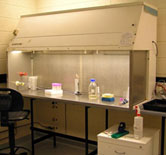
Biosafety Cabinet
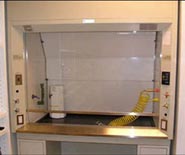
Fumehood
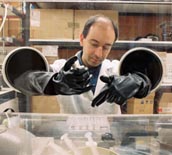
Glovebox
Microtomes and cryostatss
Microtomes and cryostats:
- Lower the workstation to keep arms closer to body
- Apply padding to the front edge of work surface to eliminate contact stress
- Retrofit the existing handle with an adapter that will allow the operator to use the hand wheel in a pistol grip position. This will alleviate repetitive wrist flexion and extension
- Consider the use of an automatic foot pedal instead of using the hand whell
- Avoid placing utensils such as forceps inside the cryostat
- Take frequent microbreaks to stretch the hand and forearm muscles
- Reduce force while operating the hand wheel
- Use motorized cutting
- Adjust the feed wheel position to reduce stress

Cell Counter
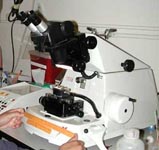
Microtome
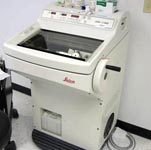
Cryostat
Cell counters
Cell counters:
- Consider purchasing light touch counters or cell counters with soft keys, these encourage faster counting and decrease hand fatigue
- Utilize job rotation and spread counting task among many people and spread the task over a longer period of time
- Pad the edge of the work surface to prevent contact stress on the forearm, wrist and elbow
- Use microbreaks every 20-30 minutes to stretch hands
Micromanipulation and fine motor skills
Micromanipulation and fine motor skills:
- If available, use plastic vials with fewer threads, reducing twisting motions during capping and uncapping lids
- Use small pieces of foam to prevent soreness on the fingertips where fingers and forceps articulate. The foam will distribute the force over a greater surface area, reducing the compressive forces on the soft tissue
- Practice using the forceps between the index and middle finger instead of the thumb and index finger. Then try alternating between the two positions to reduce the use of the thumb
- Tilt storage bins toward the worker to reduce wrist flexion while reaching for supplies
- Encourage microbreaks and utilize hand exercises
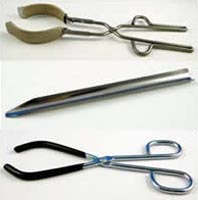

If you require further information or assistance please visit our Employee Well-being contact page for contact information.
Published on and maintained in Cascade CMS.
